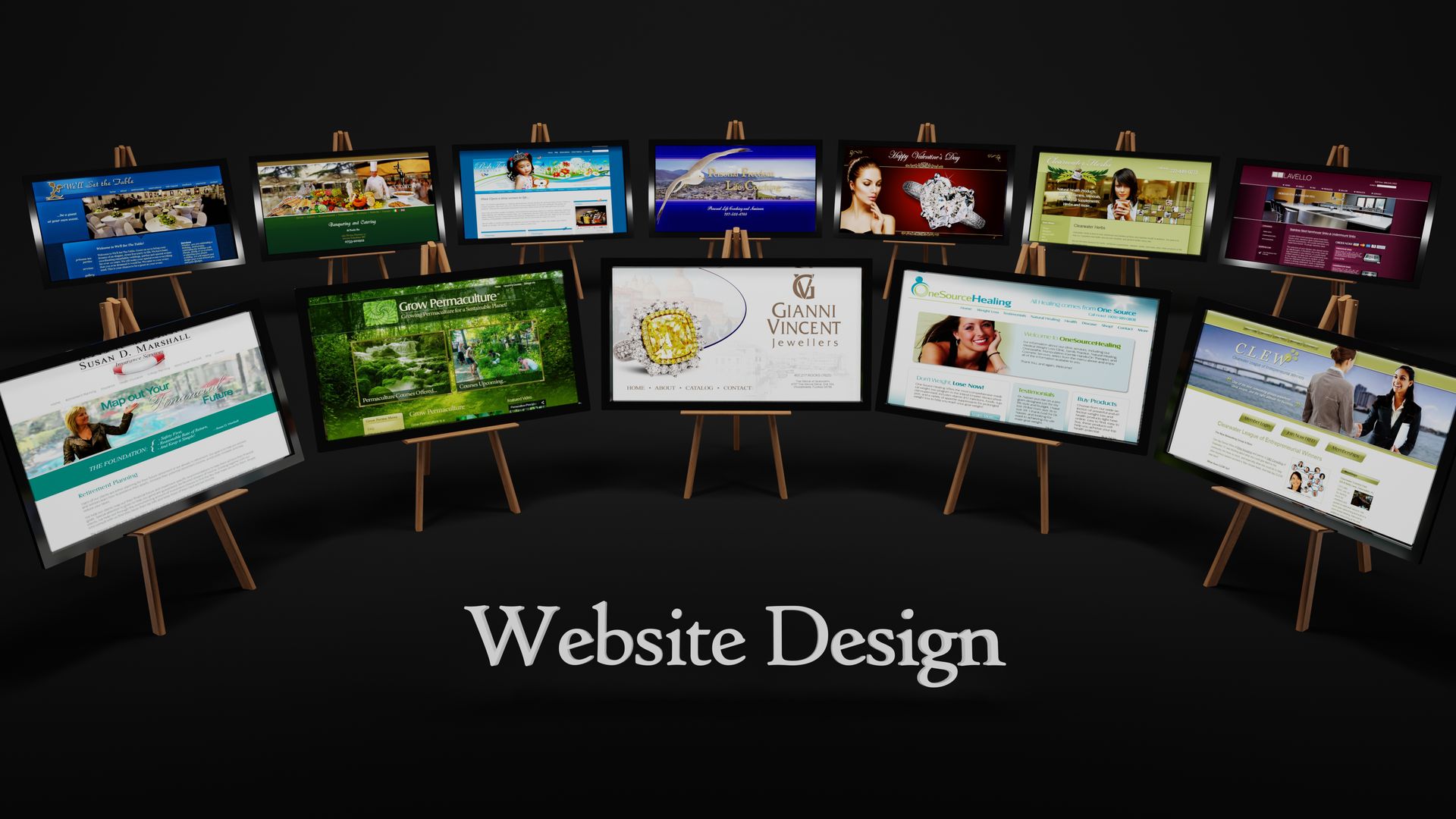Professional Websites
We offer websites starting from
$599
(Not including hosting and any Content materials costs. We use Joomla opensource platform, contributed to by over 10,000 web coding geniuses.)
Just ANY website will do, won't it?
Not really.
Buyers will visit your website on average of 7 times before they decide to buy from you.
Still think just any website will do?
What goes into a better quality Website?
Art / Technical / Marketing
Website design and development encompasses many different skills and disciplines in the production and maintenance of websites. It's a delicate marriage between art, graphic design aesthetics and technical and marketing.
- A better website must have better CONTENT to appeal to the visitors and the Search Engines.
- A better website must have all the correct TECHNICAL nuts and bolts to satisfy today's SEO and security, etc., AND function withe the visitor interactivity today's browsing audience has come to expect of any better website.
- AND a better website must LOOK great to set itself in a high position among the completely saturated ocean of great looking website designs available these days, AND be easy to navigate and find in the desired information. Usable.
Website design is not just words and pretty photos pasted on a page. It's Website DEVELOPMENT where graphic design meets interface design meets code authoring meets user experience design meets Search Engine Optimization.
What Content? What Pages?
Content for any promotional piece is a huge topic, including a website. The most simple question such as "What pages should be on my website?" and "How to best organize website Content into logical sections?" could be the make or break of the website, and the key to visitor/buyer conversion ratios. And it's no longer a pretty Homepage with Keyword-rich verbiage that's important in that regard. The entire website should have RELEVANT Content, and be careful NOT to spam the Search Engines with too many repetitive Keywords. That's not just "old school," that's dangerously obsolete. Search Engines are pretty sophisticated A.I. these days, and you could emphasize the "intelligence" in that concept.
Search Engines and visitors alike are looking for relevant Content that answers the questions people ask in their Searches and Internet queries. What are visitors looking for? What are they EXPECTING to find on your website? What do the Search Engines require of your website? Why would a Search Engine post YOUR website above others? These questions are essential, let alone its look and beautification. What design works for its target market? What age group? What culture? What audience trends? Is it designed for end consumers or business-to-business? Is it for retail or entertainment? Further, Websites should EDUCATE as much as attempt to sell. An online brochure is great, but an online INFORMATION source trumps every time.
Graphic Design Aesthetics and User Experience
Better website design ensures the aesthetics don't clash with the clarity and accuracy of the Content, intended marketing message or the ease of navigation. USABILITY. What is the final USER EXPERIENCE? Did the user find it usable? Was it intuitive and user-friendly? Was it useful? Thus it's really interactive user interface design.
Imagine YOU visiting your own website... How did it go? Did you find what you needed to get answered? Did you find it thru the Search Engines or referral? Did it look professional and aesthetically pleasing?
Reputation is everything, and better design and better content makes sure clients are portrayed favorably.
Better websites should have better Content hierarchy, better Typography and better Page layout. A big part of user interface design is the quality of the page layout. How the Content is presented, the look, and layout. Sure, keep it simple, but it's important.
And those page layouts are also important for different browsers, different screen resolutions and different device sizes. Which brings us to...
Responsive Page Design
Today's Website design means making sure it's Responsive, that it looks correct on any device it's viewed from (ie. Desktop, laptop, tablet, smartphone, portrait or landscape orientation.) Ever visit a website on a mobile phone that looks wierd? There's a good reason for that, and the better web designer will keep Responsive design in mind as develops the project.
Which Programming to Use? Joomla Rocks! WordPress Sucks!
We use exclusively Joomla opensource platform, because it's great, robust, bulletproof, and contributed to by over 10,000 web coding geniuses. And it's updated constantly for security exploits and improved features.
You wouldn't want a website built on WordPress, despite its popularity because of "ease of use," where it requires over 30 plugins to run at all, would you? And when those 30 plugins fall out of date? Yeah, the website fails to work, or becomes a huge security hazard. Ugly. Do YOU the client know how to dive in deep and get things updated and running properly? Doubtful you would have either the know-how or the patience to install, update or debug a set of 30 plugins just to keep your website running. (So tell us again why WordPress is popular?)
Client can (and should) ADD/EDIT/DELETE his own Content
Another great reason to utilize a Content Manager System (CMS) like Joomla, is that once the website is constructed, the CLIENT can make his own additions, edits, and deletions to his Content. Login and have at it. So unless it's a major design change, etc., the client doesn't have to go running to the designer and pay for routine updates to Content that the client can (and should) do himself.
A Blog for example is easy for the client to jump in whenever he wants and keep his website fresh with new Content, which of course improves his SEO in the process. New Testimonials. New Products. New Services. New personnel. Whatever. Add, change or delete. You can even set the date for future Publishing. It's all there.
Hidden Pages and Permission Levels
Joomla also allows for several User Access Levels. Which means the client can hide certain pages from visitors, so they can't see those pages. This is useful for subscriber Content, Intranet and internal functions, collaborations, etc., etc.

